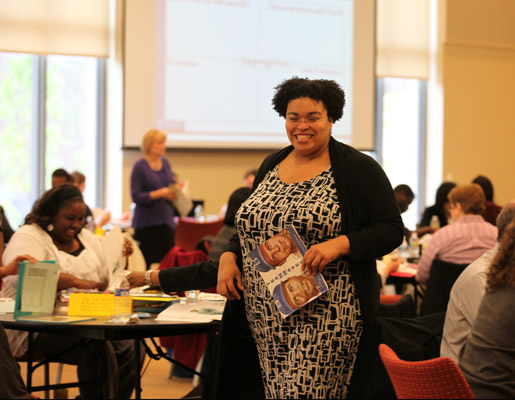... it's also how you say it
Linguistic variation makes a difference in STEM classrooms
The 30 students in a high school classroom may all speak English, but a mix of factors in each student’s background shapes how he or she speaks it. The same is true for the teacher. Each person’s social, regional and economic experiences influence which words are selected and how they are spoken. As a result, two students who try to communicate the same thing can be met with varying reactions from the teacher, based on the language used and the attitude of the hearer to those language variations.
In classrooms throughout Virginia and Maryland, Anne Charity Hudley is studying how such variations in language not only affect learning but also student assessment in STEM classes.
“There has been some strong research on the implication of language and culture in language arts classroom, but more information is needed about the intersections in STEM classrooms,” said Charity Hudley.
 Along with co-investigator Christine
Mallinson, an assistant professor of language, literacy and culture at the
University of Maryland, Baltimore County, Charity Hudley is working with 60
K-12 educators in Virginia and Maryland to assess their knowledge of and their
responses to language variation, particularly among African American students.
Along with co-investigator Christine
Mallinson, an assistant professor of language, literacy and culture at the
University of Maryland, Baltimore County, Charity Hudley is working with 60
K-12 educators in Virginia and Maryland to assess their knowledge of and their
responses to language variation, particularly among African American students.
Increase minority retention
In addition to her work with Mallinson, Charity Hudley is also collaborating with William & Mary biologists Margaret Saha, Dan Cristol and John Swaddle to investigate how cultural insights will help minority retention in the College’s introductory biology courses.
The two investigators are using surveys, interviews and classroom observations to conduct their assessments. They are also designing “linguistically informed” materials for teachers to use in their classrooms and they are hosting workshops for the teachers.
But Charity Hudley’s work does not stop with K-12 classrooms. She and Mallinson are also working with pre-service teachers and STEM majors on their respective college campuses.
The two received a National Science Foundation grant in 2011 to fund their work for three years.
Next generation of STEM thinkers
“Language, culture and science have always gone hand in hand for me,” said Charity Hudley, whose mother and father are both physicians. She noted that her parents have spent their careers working in medically underserved areas in Richmond.
“My mother was one of the
earliest physicians to participate in the CHIP (Comprehensive Health Investment
Project) program in Virginia and my father served on the Virginia Special
Advisory Commission on Mandated Health Insurance Benefits,” said Charity
Hudley. “I co-wrote this grant in honor of them so that we can all work
together to produce the next generation of STEM thinkers who understand the
role of language and culture in their work and research so that they can best
serve diverse populations.” ![]()















